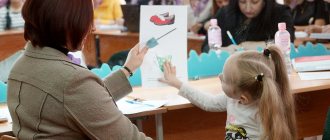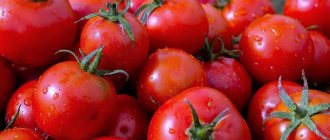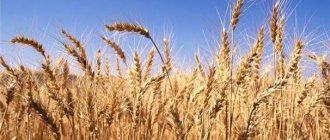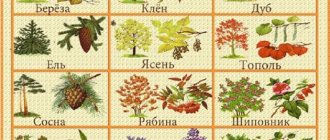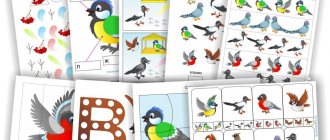Lexical topic “Man. Body parts" information for parents
- about the structure of the human body, the purpose of individual parts;
- how people differ in appearance from each other;
- names and number of fingers (thumb, index...), toes;
- how joy, sadness, surprise are expressed on a person’s face;
- where the right side is the left (be able to touch your left ear, leg, eye with your right hand, and vice versa);
- necessary rules of body hygiene.
Expanding children's vocabulary:
NOUNS:
body, torso, head, eyes, ears, nose, nostrils, mouth, teeth, lips, tongue, back of head, hair, temples, eyelids, cheeks, face, forehead, eyebrows, eyelashes, chin, hands, fingers (thumb, index, middle, ring, little finger), elbows, wrist, palms, nails, legs, foot, heel, knees, shoulders, forearm, back, chest, belly, belt, thigh, color, shape, size, size, people, man, woman , girl boy.
ADJECTIVES:
tall, low, wide, narrow, thin, full, thick, long, thin, big, small, left, right, lower, upper, children's, adult, brown, blue, gray, green, thick, curly, curly, funny, sad, cheerful, sorrowful, happy, caring, beautiful.
VERBS:
stand, lie, walk, listen, hear, think, lift, lower, turn, twist, jump, run, look, smell, touch, feel, move, catch, show, wear, breathe, feel, grow, wash, wipe, take care, look after, bathe, float, comb.
TO FORM NOUNS WITH DIMINATORY SUFFIXES “CALL LASKOVO”:
Hand - pen Head - head Finger - finger Leg - leg, etc.
TO FORM PLURAL NOUNS IN THE NOMINATIVE AND GENIVE CASES “ONE-MANY”:
Hand - two hands - hands Leg - two legs - feet Finger - two fingers - fingers, etc.
FORM PLURAL NOUNS:
Finger – fingers Leg – legs Arm – arms Shoulder – shoulders, etc.
V M E S T E S R E B E N K O M
PARENTS ARE RECOMMENDED:
- look at a picture of a person;
- consider your own body;
- ask the child to name the parts of the body in the drawing, and then the parts of his own body;
- find out whether the child knows what legs, arms, ears, nose, eyes, etc. are needed for;
- fix the name of the fingers (thumb, index, middle, ring, little finger);
- play a game "Big small"
:
Dad has a nose, and son (daughter) has a nose.
The mother has lips, and the son (daughter) has lips. Dad has eyes, and son (daughter) has eyes.
The mother has hands, and the son (daughter) has hands.
Etc. UNDERSTAND RIDDLES:
My brother lives behind the mountain - He can’t meet me. (eyes)
Always in your mouth, never swallowed. (language)
Five brothers
Equal for years
They are different in height. (Fingers)
Summary of the lesson “Our body” for children of the senior speech therapy group
Development of speech “Our body” Program content: Summarize children’s knowledge about parts of the body, organs and their functions; teach to perceive objects, including different senses; Develop grammatical categories (select quality adjectives for nouns, select actions for objects, learn to form nouns in the genitive case). Continue to develop phonemic hearing, speech breathing, articulatory motor skills, and intonation expressiveness of speech. Cultivate a desire to protect and strengthen your health. Materials for the teacher: didactic doll “Baby”, poster “Our Body”, tape recorder. Materials for children: jars of cotton wool soaked in the smells of pine needles, garlic, perfume; small mirrors; a tray with pieces of food, a set of pictures for the game “Find a place for the picture” Lesson progress: 1. Motivational moment. (Children stand in a semicircle) Baby is our guest, he asks to tell us what the nose, hands, and eyes are for. We will explain, show, help you understand. 2. Explanation of new material. -You need to distinguish between body parts and organs. Look at the poster. -Name the largest part of the body (torso). Inside the body there are internal organs - heart, lungs, stomach, etc. Legs, arms and head grow from the body. a) head: - What is located highest on the head? (hair) Touch it, crush it. -What are they like? (soft, fluffy, dark, light, long, short) -What is hair for? (to protect the cold and from the hot rays of the sun) - Behind the head is the back of the head, in front is the face. b) Below the hair is the forehead, below the forehead are the eyes. -Close your eyes. What am I doing? (took the book, waved her hand) Now open your eyes. Here's what I did (repeat steps). -Why are eyes needed? c) At tables. – Cover your nose and mouth with your palm. Sit down. Why do you need a nose? (to breathe). But he has one more responsibility. - Open the cases from the Kinder surprises, bring them to your nose. How did you feel? (smells). What? (perfume, pine needles, garlic, orange). So why do we need a nose? (breathe and smell). - Show with your facial expression or facial expressions whether you liked the smell or not, and I’ll try to guess. - Individually. Sasha Sh., Sonya S. Take a deep breath, and as you exhale say: “Pleasant smell!” Another breath: “Oh, what a pleasant smell!” 3. Physical exercise. “We stomp our feet, we clap our hands...” 4. Guess the riddle: The animal has it on the top of its head, and we have it below the eyes. (Ears) -Let's check what the ears are for. Close your ears tightly. V - quietly pronounces the words hat, car, tambourine. What have I done? How did you guess? What did I say? What are ears for? Listen. Baby crying. Repeat loudly, quietly, in a whisper. How can you calm your baby? (shake like mom) 5. Articulation gymnastics. Take mirrors and show how the baby sucks a pacifier. Exercise “Brushing my teeth” I brush my teeth, I brush my teeth, Both above and below, So that they sparkle and shine, They would never get sick. Exercise “The tongue is sick” Our cheerful tongue got sick like an old man. He coughed and groaned, I barely recognized him. He quickly gave him some tea (“Cup”) And didn’t forget the jam (“Tasty jam”) The tongue became more cheerful (“Smile”) And called his friends over (“Needle” - back and forth movements) -Guess what the first sounds are The baby learns to speak (children identify sounds by articulation) - How did you guess? -What sounds are these? (vowels). Why? (You can sing them.) -What organs help us speak? (tongue, lips, teeth) - Game “Stop at the sound.” Children walk in a circle, naming syllables, when they hear a syllable with the sound /I,/ they must stop. -Didactic game “Find a place for your picture” In the box under the symbol “a” put pictures that begin with the sound /a/, and under the symbol “u” - with the sound /u/. 6. Take bread from the tray and eat it. Try other products. -Tell me how you ate (chewed with your teeth, swallowed) What else did you feel? (taste of food) So, why does a person need a mouth? (talk, eat, taste food) 7. Summary. Baby, now you know what body parts and organs are for? -We found body parts that would not be needed by a person? What about an organ that would do nothing? Nature has provided for everything, and all we have to do is take care of ourselves, protect and strengthen our health. We will talk about how to do this in other lessons.
MADOOU general developmental kindergarten No. 422 “Lorik”, Yekaterinburg
Parents are recommended:
- Invite the child to say his last name, first name and patronymic. State the names and patronymics of each family member, your home address;
- Talk with children about the structure of the human body, the rules of personal hygiene;
- Learn the names of the fingers on your hand, learn to distinguish between the right and left sides.
On the topic, children should know : the name of the parts of the person, the name and number of fingers on the hand, the rules of personal hygiene, the composition of their family, name the names and patronymics of their parents, their professions.
Play with children:
- Listen to the instructions, follow them and tell us what you did:
- Sniff your nose, knock your fist, raise your shoulders.
- Raise your hands, clap your hands, squat down.
- Wink your right eye, stamp your foot, sit down, etc.
- Learning finger gymnastics:
MAN
- Let's guess the riddles:
It’s given to you, and people use it. (Name)
Red doors in my cave, White animals sit at the doors. I gladly give both meat and bread - all my spoils - to the white beasts. (mouth, teeth, lips)
My brother lives over the mountain and cannot see me. (eyes, nose)
They don’t sow, they don’t plant, but they grow themselves. (hair)
Speech development tasks:
- Choose action words : what are we doing with our heads? – we think, nod, turn, etc.
With ears - we..., with eyes - we..., with nose - we..., with mouth - we..., with legs - we..., with hands - we...
- “One - many”: formation of plural nouns: forehead - foreheads, mouth - mouths, elbow - elbows
Change this way: nose, eye, ear, cheek, eyebrow, side, nostril, finger.
- "He and I". Converting the 3rd person singular form of verbs to the 1st person form:
he eats—I eat; he sniffs - I sniff, he draws - ………………., he goes – …………… he writes – ………………., he draws – ………… he goes – ………… ……….., He is jumping - ………..
- Name everything big: nose - nose, hand - hand, leg - ..., eye - ..., lips - ..., fists - ..., elbows - ..., nails - ...
- Formation of simple participles and adjectives “Name which one?” Live - living, grow - growing, love - loving, respect - respecting, stroke - ironed, try - trying, care - caring, rest - resting.
- “Complicated words” : Mom has blond hair, which means she is fair-haired. Make up complex words from phrases: blue eyes, gray eyes, brown eyes, dark hair, red hair, light skin, dark skin.
- Solve a logical problem: grandma came home from work earlier than dad, and dad came home earlier than mom. Who came home from work earlier than everyone else, and who came later than everyone else?
- Explain the proverbs : The whole family is together, so is the soul in the same place. It's warm in a friendly family even in the cold. Think of situations where you can say these proverbs.
- Write a story about the family according to plan:
Tell us about yourself and your family according to plan
- Who is holding which ball?
Summary of a lesson in the senior group on the topic “man and parts of his body”
LESSON SUMMARY IN THE SENIOR GROUP ON THE TOPIC “MAN AND PARTS OF HIS BODY”
Goals:
1)
clarify children’s knowledge about the structure of the human body and the purpose of individual parts of the body; teach children to see signs of similarities and differences between people and express them in speech; work on enriching children's vocabulary;
2) develop speech, attention, proper breathing, hand motor skills;
3) cultivate an attentive, friendly attitude towards each other.
Dictionary:
boy, girl, man, woman, grandmother, grandfather, person, people, names of body parts (upper and lower limbs).
Equipment:
Pictures
,image of the human body; schematic representation of a person; toiletries; simple pencil.
Progress of the lesson
1.Org. moment.
There are a number of pictures on the board: girl, boy, man, woman, grandmother, grandfather.
-Who is drawn in these pictures? (girl, boy, man, woman, grandmother, grandfather)
-What can you call it in one word? ( People
)
All people are different: there are old and young, adults and children.
Look at each other carefully, how do people differ from each other?
- Look into each other's eyes. What color are they?
- Is your hair the same color?
—Are you all the same height? (invite the children to measure their height)
- But since we are so different, then why are we all called the word “PEOPLE”? What do we people have in common? How are we similar?
2.Message about the topic of the lesson.
-Who do you think we will talk about today? (person and body parts)
Working with pictures depicting the human body.
—
Look at each other carefully.
-What parts of the body does a person consist of? ( head, neck, torso, upper limbs - arms, lower limbs - legs)
—
That's right guys, we all have a head.
What's on the head? (nose, mouth, ears, eyes)
-What are the nose, mouth, ears, eyes for?
Guess the riddles.
He can be very different: kind, harmful, proud, important, long, small, hunchbacked, fat, thin,
freckled (nose)
He is always at work when we talk. And as he rests, Then we remain silent. (mouth).
3. Breathing development
Gymnastics to develop proper breathing.
We will inhale easily and smoothly, (inhale) Let us exhale protractedly. (exhale) Nose at work (inhale) Mouth at work (exhale) We all breathe well.
—What does the head “sit” on? -Why does a person need a neck?
(neck - it connects the head and torso of a person
)
—
What is the largest part of the human body called?
( torso
)
-Show me where your torso is?
- What is on the front of the body? ( chest, stomach
)
- What's behind? ( back
)
4.New material.
-What do you think the upper and lower limbs are?
-What are the hands called?
-What are the legs called?
-At the very bottom of the leg - this part of the leg (show) is called the foot.
Why do you think? ( from the word “step”
)
5.Development of motor skills.
Gymnastics for arms
A very complex man: (index finger on forehead, frown) Two eyes and two eyelids. (point to the eyes, eyelids with the index finger) And look carefully! - (index finger from the eyes to the temples) Two ears and two nostrils (point to the ears and nostrils) But there are five fingers (spread the fingers on both hands) To hold everything with them. (grabbing gesture with hands)
6.Secure the material.
Working with a human outline diagram.
Guess the riddles.
The largest part is the support for everything. And there is a neck, a back, and a stomach. Tell me, what is this? (torso)
Always combed, clean, smart - The beginning of everything. (head)
They've been racing all their lives, but they can't overtake each other. (legs, lower limbs)
Part of the body that is not afraid to do business (arms, upper limbs)
Two mothers have five sons - one name for all (hands and fingers)
Game "STOP"
The teacher shows the children two drawings. (girl and boy)
—Who do you think the artist depicted?
- Why do you think so?
-What are our boys like? (strong, brave, future men, protectors)
7. Compilation of sentences using visual material. Introduction of verbs into speech.
Using toiletries.
-What things does a person need to be clean and tidy? In the store: soap, toothbrush, toothpaste, shampoo, washcloth, comb, towel.
-Why does a person need these things? -What things do you think every person should have exclusively? -Another person cannot use these things. Why?
8.Result.
-What parts of the human body do you remember? -What does a person need to be clean and tidy?
